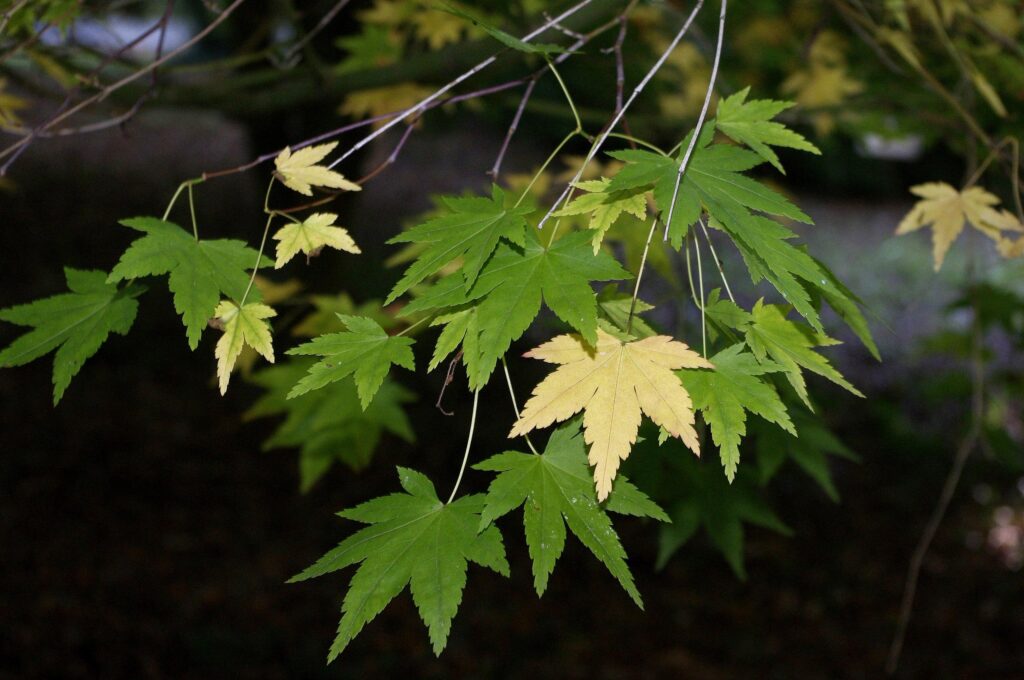

Arakawa Cork Bark Japanese Maple (Acer palmatum ‘Arakawa’)
Also known as: Acer palmatum 'Arakawa', Rough-Bark Japanese Maple, Arakawa Ukon.
Arakawa Cork Bark Japanese Maple (Acer palmatum ‘Arakawa’) is an amazing tree to include in any garden. With year-round interest, it has beautiful foliage and an unusual bark. The delicate, five-lobed leaves are bright green in summer, changing to orange and yellow in autumn. Its bark is striking with thick, corky ridges, giving an element of rugged beauty. Plus, it’s great for small spaces since it only grows to 5m high and only takes around 10 years to reach its full size. Add it to a sunny but sheltered spot for the best performance.
Plant care guide:
Watering
For optimal results, Arakawa Cork bark Japanese Maples should be watered consistently and evenly. During periods of active plant growth, water once or twice weekly to ensure the soil remains evenly moist. The soil should be allowed to almost dry out between waterings; however, during periods of extreme heat or lack of rain, additional waterings may be beneficial.
Sunlight
Arakawa Cork Bark Japanese Maple (Acer palmatum 'Arakawa') prefers full sun in the morning and afternoon, but will also thrive in partial shade. This species should receive at least 6 hours of direct sunlight during the peak daylight hours of 10 am to 4 pm. This type of maple has been known to do well in both high and low light conditions. It is versatile and can adapt to varying levels of exposure. In low light areas, some summer afternoon shade may be beneficial. Too much direct sunlight can cause sunburn or, in some cases, leaf scorch.
Pruning
Arakawa Cork Bark Japanese Maples should be pruned in late spring after any significant threat of frost has passed. Prune lightly and carefully: removing only stems and branches that cross or rub against each other and those that are dead and diseased. Additionally, pruning should be done to encourage better structure and symmetrical growth. Be sure to leave a balanced and even framework when pruning. When shaping the tree, aim to remove no more than 1-third of the living growth.
Plant information:
- Family: Sapindaceae
- Type: Tree
- Height: ~4.57 meters
- Cycle: Perennial
- Growth Rate: Low
- Flower Color: Reddish-purple
- Maintenance: Low
-
Watering:
- Average
- Every 3-4 days
- Sunlight requirement: Full sun, part shade
- Pruning:
- May
- Propagation: Grafting Propagation, Cutting, Layering Propagation, Air Layering Propagation, Root Division
- Flowering Season: Spring
- Fruit Color: green, red, yellow, purple, orange
- Harvest Season: Fall
- Origin: Japan
- Seeds: Yes
- Drought Tolerant: No
- Salt Tolerant: No
- Thorny: No
- Invasive: No
- Tropical: No
- Indoor: No
- Flowers: Yes
- Cones: No
- Fruits: Yes
- Edible Fruit: No
- Leaf: Yes
- Edible Leaf: No
- Cuisine: No
- Medicinal: No
- Poisonous to Humans: No
- Poisonous to Pets: No

Content is based on public databases such as the KEW Plants of the World database, among others. Please double-check all information. "About Plants" does not take responsibility for any inaccuracies.
